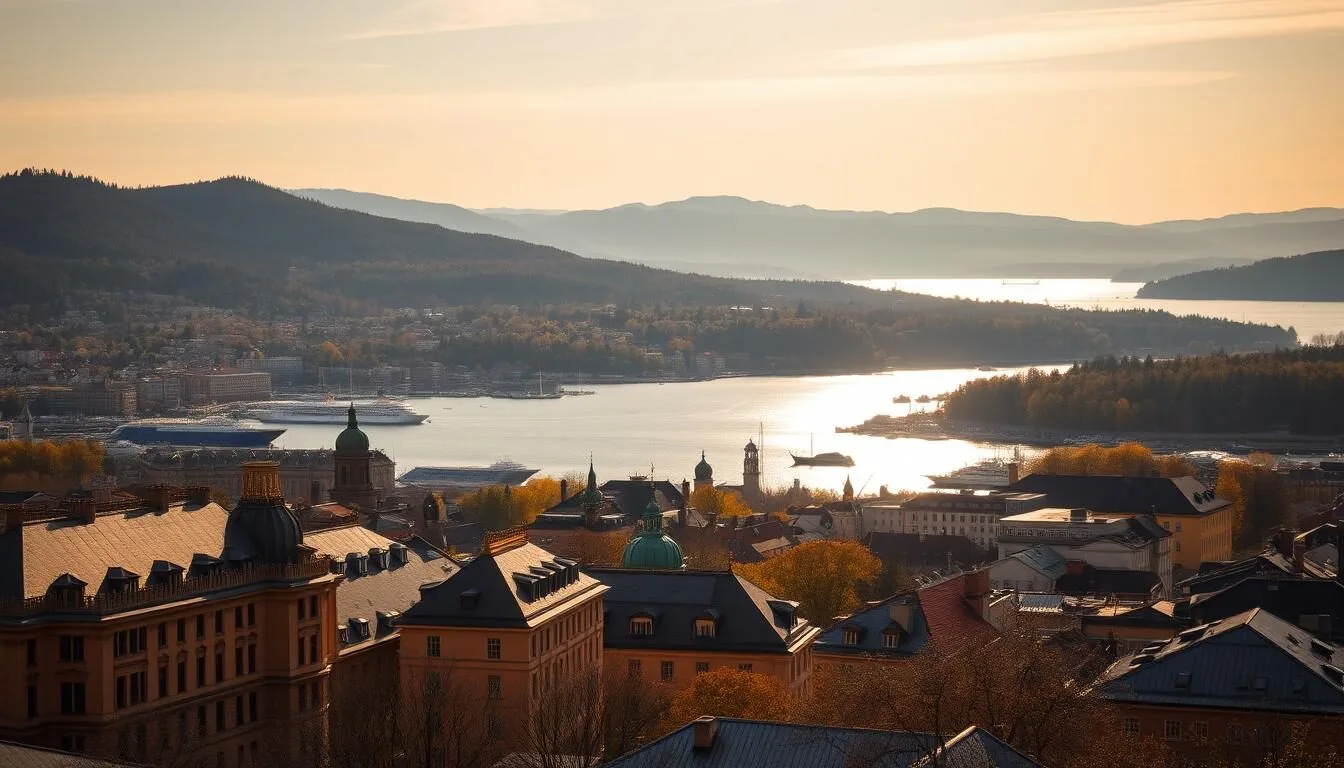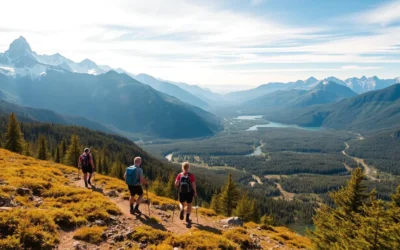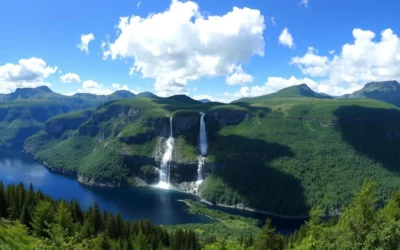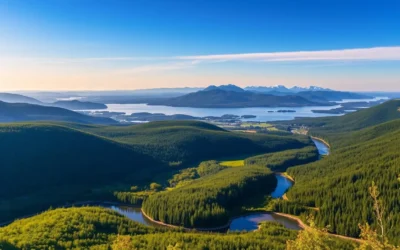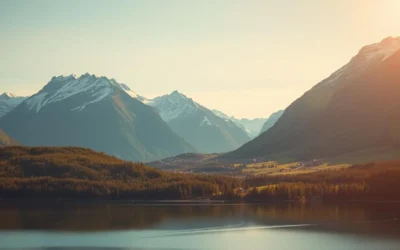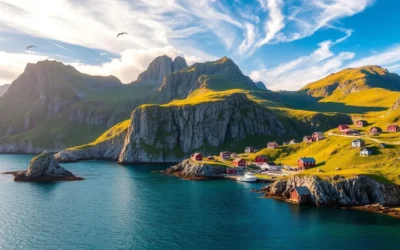✓ Accommodations✓ Flights✓ Rental Cars
You might be surprised to learn that Oslo, the capital of Norway, is home to over 630,000 people, making it the largest city in the country.
This vibrant capital offers a unique blend of urban sophistication and easy access to natural landscapes, making it an ideal destination for travelers seeking adventure.
Recently dubbed the “newest capital of Nordic cool” by The Wall Street Journal, Oslo is a must-visit destination that promises an unforgettable experience. With its world-class museums, innovative architecture, and vibrant neighborhoods, you’ll find plenty of exciting things to see and do.
Discovering Oslo: Norway’s Vibrant Capital
Oslo, established in 1048, has evolved into a captivating capital city that boasts an intriguing mix of old and new. While it was briefly Norway’s capital in the 1300s, it wasn’t until 1814 that it became the permanent capital.
A devastating fire in 1624 led to the city being rebuilt slightly west of its original location, which is why Oslo’s historic charm is somewhat different from other Norwegian cities like Bergen or Trondheim. Today, Oslo is known for its striking contemporary architecture alongside historic buildings, making it a unique blend of the old and the new.
One of Oslo’s standout features is its streets, which are designed to be pedestrian-friendly, making it one of the most walkable city capitals in the world. This walkability allows visitors to easily explore the city’s many museums and cultural attractions on foot.
![]()
| Aspect | Description |
|---|---|
| Historical Significance | Established in 1048, briefly capital in 1300s, and permanently since 1814 |
| Architectural Blend | Mix of contemporary architecture and historic buildings |
| Walkability | Designed to be pedestrian-friendly, easy to explore on foot |
| Cultural Attractions | Numerous museums and cultural sites |
Oslo has undergone a renaissance as a cultural hub, with new museums, restaurants, and urban developments popping up. The city is also known for its commitment to sustainability and green initiatives, balancing urban amenities with easy access to nature, including forests and fjords within reach of the city center.
Getting to Oslo and Getting Around
With its comprehensive public transportation system, Oslo is a city that’s easy to explore. You can efficiently travel across the city using various modes of transport.
From Oslo Airport to City Center
Oslo Airport is well-connected to the city center through various transportation options. You can take the Flytoget (Airport Express Train), which is the fastest way to reach the city center, or use buses and shuttles.
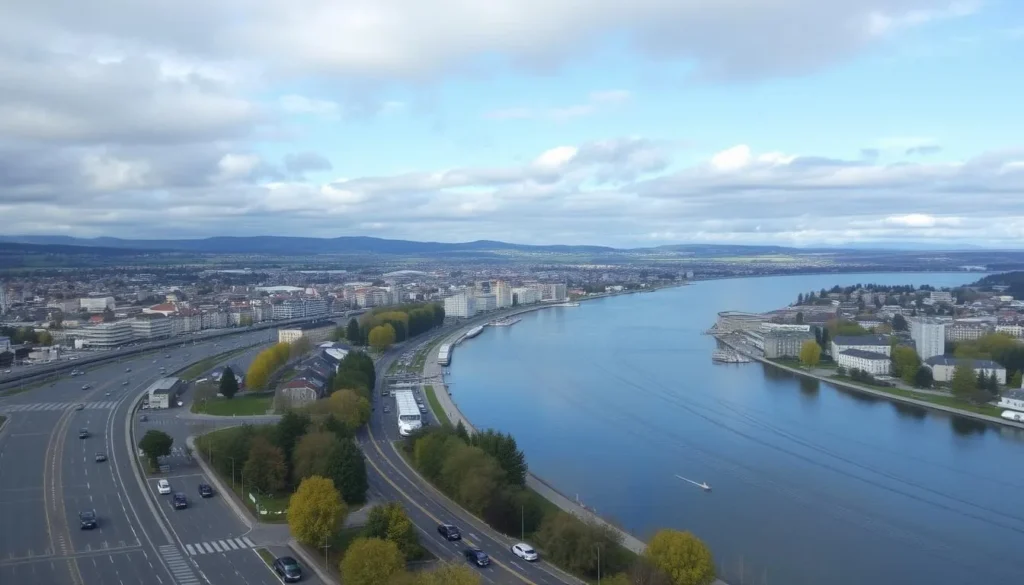
Public Transportation in Oslo
Oslo’s public transportation system includes trams, buses, metros, and ferries, making it easy to get around. You can use the Ruter app to purchase tickets and plan your journey. A single ticket allows transfers between different modes of transport within a time limit.
The Oslo Pass is a great option for tourists, offering unlimited public transport and entry to many attractions. Oslo is also very walkable, with many attractions within walking distance of each other in the city center. Electric scooters are another fun way to get around, available through apps like VOI.
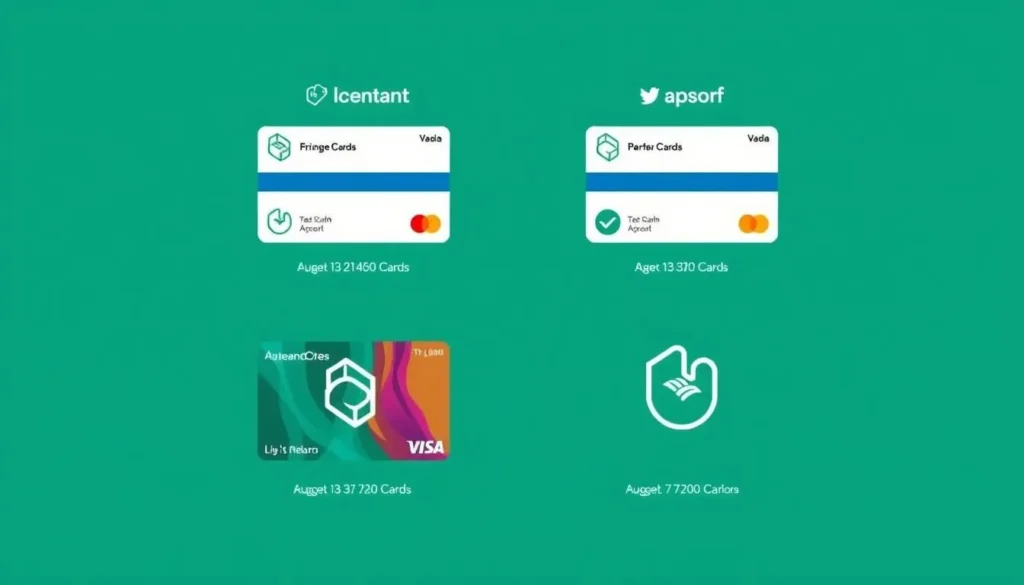
Where to Stay in Oslo
Finding the perfect place to stay in Oslo can greatly enhance your travel experience. The city offers a variety of accommodation options, from budget-friendly hotels to luxury resorts, ensuring that there’s something for every kind of traveler.
Best Neighborhoods for Tourists
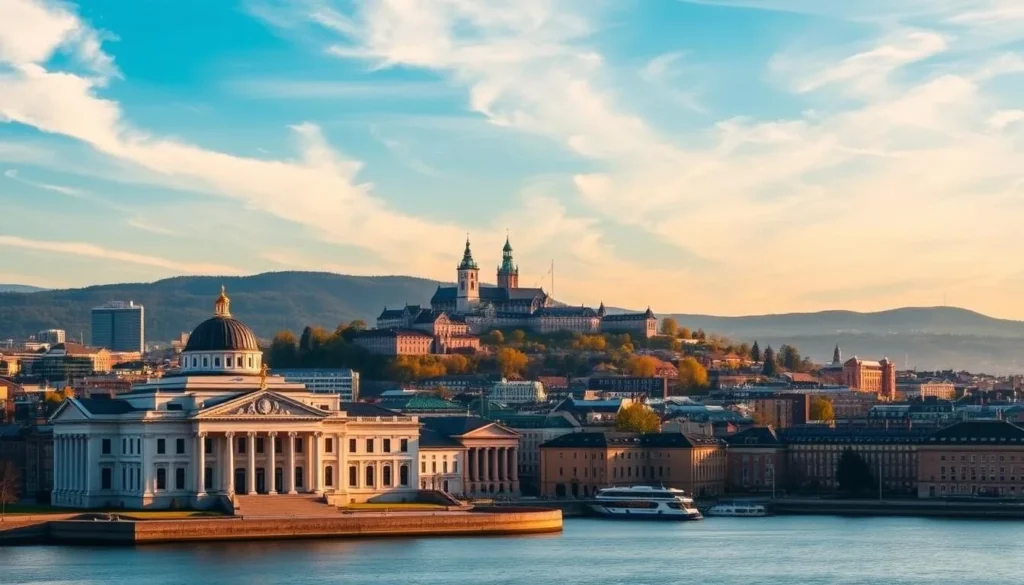
Oslo’s city center is a popular choice for tourists due to its proximity to major attractions. Neighborhoods like Grünerløkka and Majorstua are also favored for their vibrant atmosphere and easy access to public transportation. When choosing a neighborhood, make sure it’s well-connected to the city center or has good public transport links.
Accommodation Options for Every Budget
Oslo caters to all budgets with its diverse range of hotels. For budget-conscious travelers, options like Citybox Oslo and Hotel Verdandi offer comfortable stays at affordable prices. Mid-range hotels such as Comfort Hotel Karl Johan and Smarthotel provide excellent value with their convenient locations and included breakfast. For a luxurious experience, Hotel Continental stands out with its picturesque building and premium services. Regardless of your budget, you can find a hotel in Oslo that suits your needs, especially if you’re staying in the city center.
Iconic Cultural Attractions
As you explore Oslo, you’ll discover a wealth of cultural attractions that make the city truly special. Oslo’s cultural scene is characterized by its world-class museums, stunning architectural landmarks, and vibrant performance venues.
The Oslo Opera House
The Oslo Opera House is a masterpiece of modern architecture and a must-visit cultural attraction. Its sleek, angular design and stunning roof make it a standout landmark in the city.
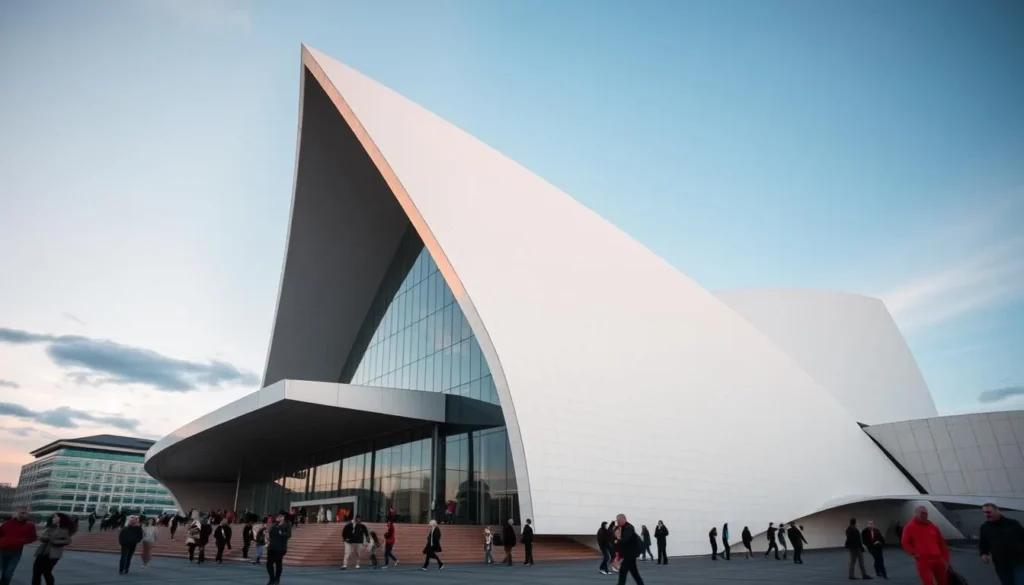
The National Museum and MUNCH Museum
The National Museum, which opened in its new building in 2022, houses Norway’s largest collection of art, including iconic works like Edvard Munch’s “The Scream.” The MUNCH Museum, opened in 2021, is dedicated to the works of Norway’s most famous artist, showcasing over half of Munch’s paintings.
Both museums have transformed Oslo into a must-visit destination for art lovers, with their striking architecture becoming landmarks in the city. Allow at least 2-3 hours to explore each museum, and check their websites for special exhibitions and events.

Historical Sites and Viking Heritage
Oslo’s rich history is palpable as you explore its historical sites and Viking heritage.
Akershus Fortress
Akershus Fortress is a medieval castle that has witnessed the city’s history since the 14th century. This imposing fortress has served as a royal residence, a military stronghold, and even a prison. As you walk through its walls, you can feel the weight of history and imagine the events that have shaped Oslo.
Viking Ship Museum and Historical Museums
The Viking Ship Museum, currently closed for renovation, will reopen as the Museum of the Viking Age in 2025/2026. Although it’s not possible to visit the Viking Ship Museum now, you can still explore other museums that showcase Viking artifacts. The Historical Museum has an impressive collection of Viking Age jewelry, weapons, and everyday items, offering a glimpse into the lives of Oslo’s Viking ancestors. You can also visit the Norwegian Museum of Cultural History (Norsk Folkemuseum) to understand Norway’s past. These museums are particularly engaging for families with children interested in Viking history. Be sure to check the museums’ websites for the most current information about exhibitions and opening hours.
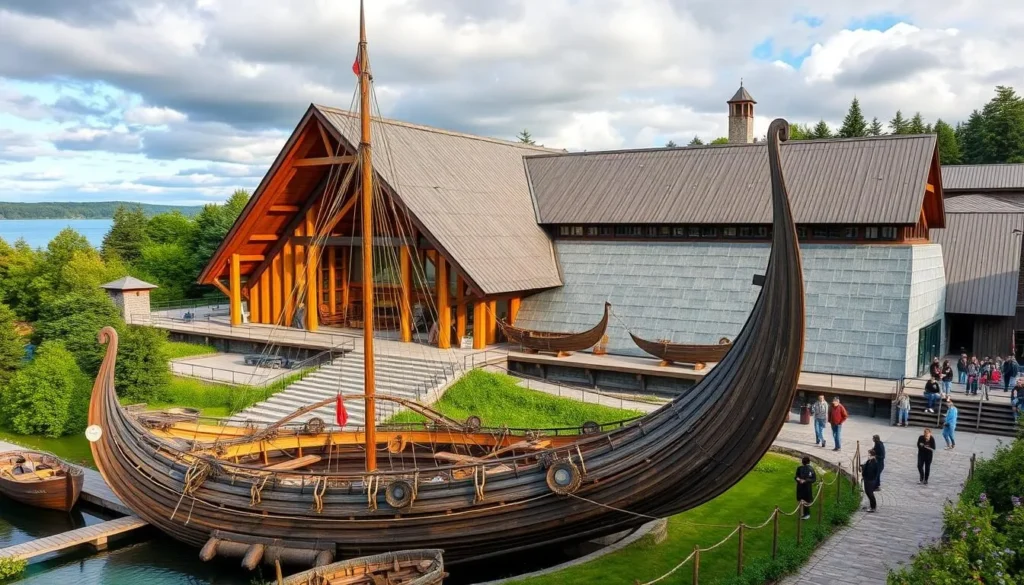
Oslo County, Norway: Best Things to Do for Nature Lovers
For nature lovers, Oslo County offers a diverse range of activities that allow you to connect with the great outdoors. From exploring vast forests to enjoying panoramic views from iconic landmarks, there’s something for everyone.
Exploring Nordmarka Forest
Nordmarka Forest is a vast wilderness just a short metro ride from Oslo’s city center. You can hike, bike, or cross-country ski through its expansive trails, enjoying the serene beauty of the forest. It’s an ideal escape from the urban bustle, offering a chance to reconnect with nature.
Holmenkollen Ski Jump
The Holmenkollen Ski Jump is one of the world’s most famous ski jumps and an iconic symbol of Norwegian winter sports. It offers spectacular panoramic views of Oslo and the fjord from its observation deck. The Ski Museum located beneath the jump is the oldest ski museum in the world, where you can learn about the history of ski jumping and even experience a simulator.
You can reach Holmenkollen using public transportation (Line 1 on the metro) from the city center, making it an easily accessible day-trip destination.
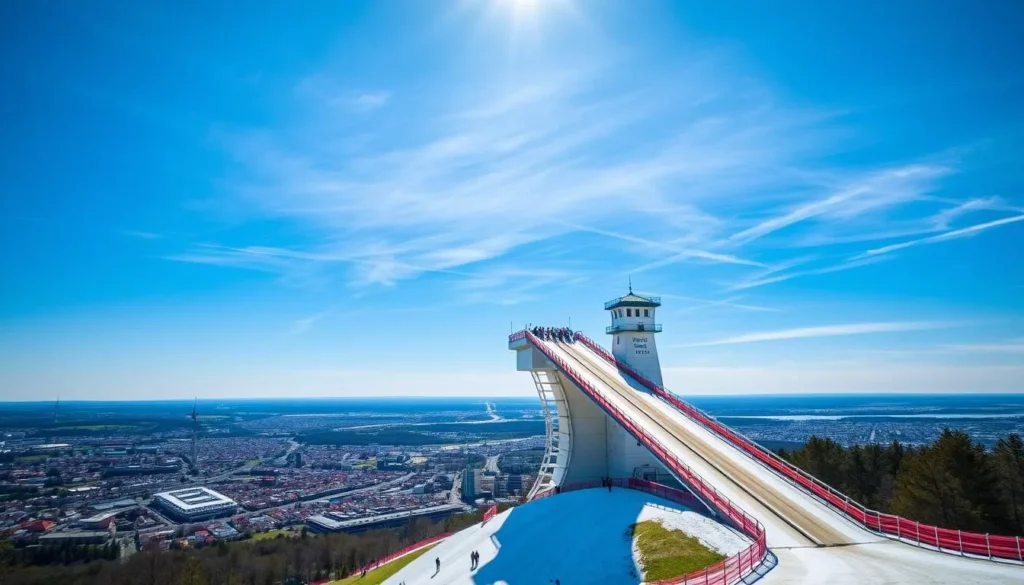
Fjord Experiences in Oslo
One of Oslo’s most striking features is its fjord, which is perfect for cruises and island hopping. The Oslofjord offers a unique blend of natural beauty and cultural experiences that are sure to captivate any visitor.
Fjord Cruises
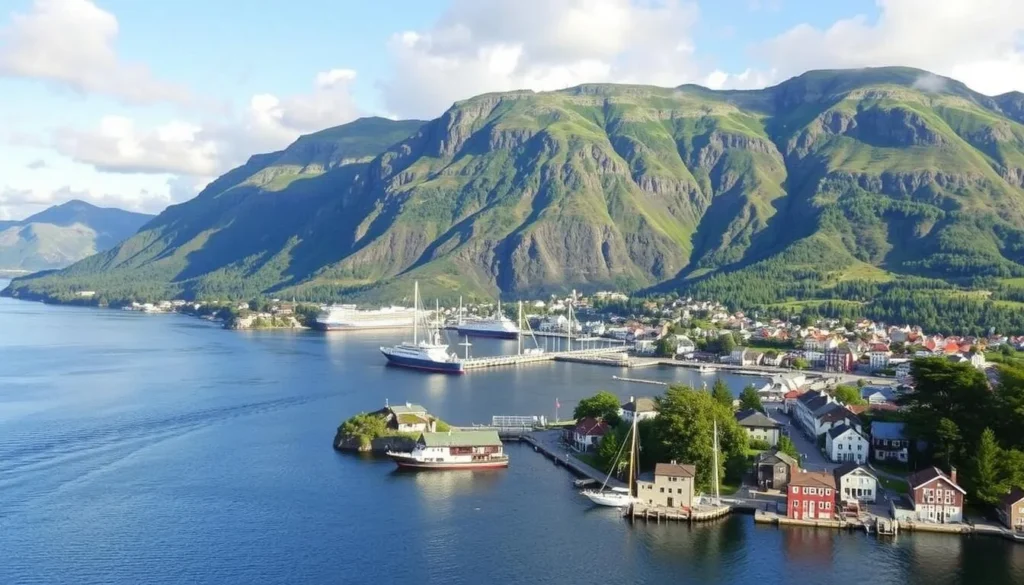
Experience the beauty of Oslo’s fjord on a guided cruise. These tours offer a relaxing way to enjoy the city’s maritime scenery, with many departing from Aker Brygge, a popular waterfront area. You can take in the sights while learning about Oslo’s history and culture from the comfort of your boat.
Island Hopping in Oslofjord
Oslofjord is dotted with islands that are easily accessible via regular public ferries departing from Aker Brygge. With a valid public transport ticket or an Oslo Pass, you can visit islands like Hovedøya, with its monastery ruins, Lindøya, known for its colorful summer cabins, Gressholmen, a nature reserve, and Langøyene, a popular beach. During summer, the ferry services are more frequent, making it an ideal time for island hopping and enjoying a dip in the fjord. Be sure to check the ferry schedule and bring picnic supplies, as options on the islands can be limited.
Unique Oslo Experiences
Experience the best of Oslo by trying out its one-of-a-kind activities. The city offers a variety of unique experiences that allow you to explore its culture, history, and entertainment in different ways.
Floating Saunas
One of the most relaxing ways to enjoy Oslo’s waterways is by visiting the floating saunas. You can book a session and unwind in a serene environment. To book, simply search for “Oslo floating sauna booking” and choose your preferred time.

Electric Scooter Tours
If you’re looking for a fun and efficient way to explore Oslo’s compact city center, consider renting an electric scooter. With apps like VOI or Ryde, you can unlock a scooter for a 10 kroner fee plus 2 kroner per minute. This is a great way to see major attractions, especially for first-time visitors. Make sure you’re comfortable with the controls before heading into busy areas.
To rent, download the app, and follow the instructions. You can also take a guided e-scooter tour for a more structured experience. Planning your route in advance will help you make the most of your time.
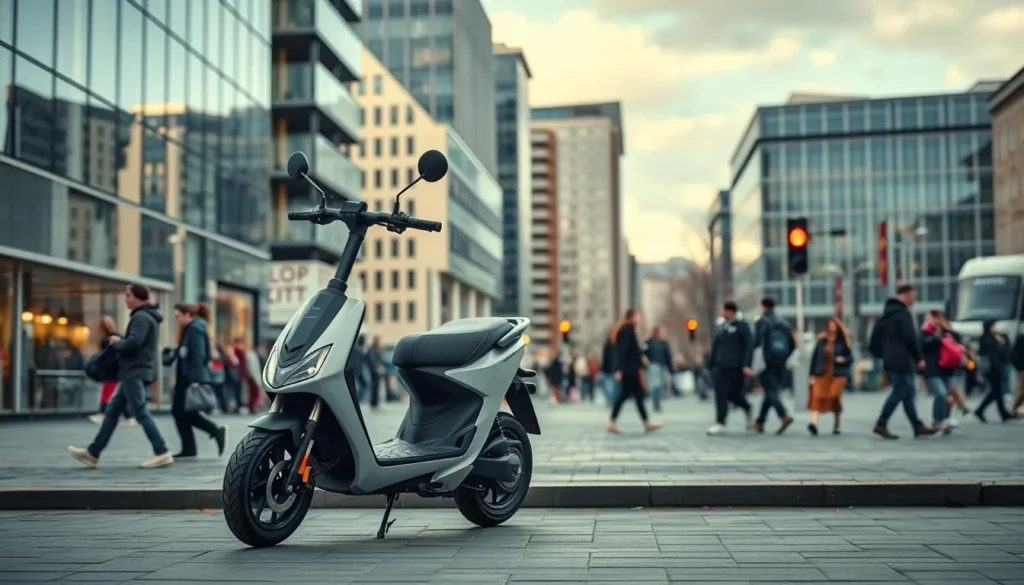
Oslo’s Vibrant Neighborhoods
From trendy districts to historic streets, Oslo’s neighborhoods offer a wealth of exciting experiences. You can explore the city’s diverse culture, history, and entertainment in these unique areas.
Karl Johans Gate: Oslo’s Main Street
Karl Johans Gate is the heart of Oslo’s shopping and cultural scene. This bustling street is lined with shops, restaurants, and historic buildings, making it a must-visit destination in the city. You can enjoy street performers, visit the Parliament Building, or simply take in the vibrant atmosphere.
Grünerløkka: The Hipster District
Grünerløkka is Oslo’s hipster neighborhood, known for its colorful buildings, street art, and vibrant atmosphere. You can explore independent boutiques, vintage shops, and design stores in this trendy area, or enjoy the thriving café culture and diverse dining scene. Visit the Sunday flea market at Birkelunden or Mathallen food hall for a taste of local crafts and cuisine in this unique place.
| Neighborhood | Main Attractions |
|---|---|
| Karl Johans Gate | Shopping, cultural events, historic buildings |
| Grünerløkka | Independent boutiques, street art, café culture |

Food and Drink Experiences
From traditional Norwegian dishes to innovative cocktails, Oslo’s food and drink scene has something for everyone. You can explore various culinary delights, from local restaurants to modern bars.
Food Halls and Markets
Oslo’s food halls and markets offer a diverse range of culinary experiences. You can visit Mathallen Food Hall, which features a variety of food stalls serving local and international cuisine.
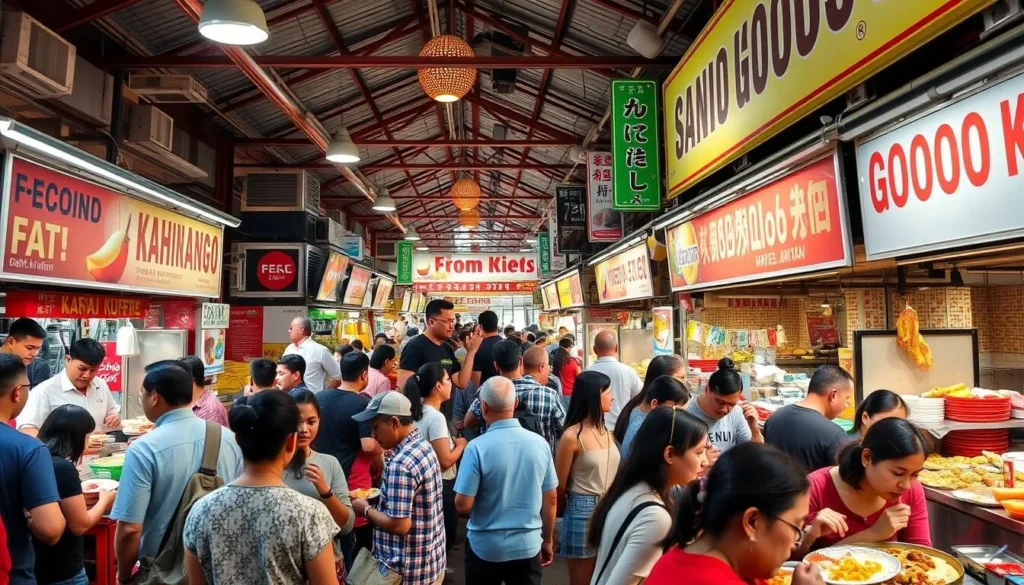
Craft Cocktails and Local Brews
Oslo is renowned for its craft cocktail scene, with bars like Himkok offering unique drinking experiences. Located at 27 Storgata, Himkok is a multi-level bar with different floors offering various food and drink concepts.

You can also explore other notable cocktail bars like PJOLTERGEIST and Bettola, or visit Tilt, an arcade bar with a huge selection of local Norwegian craft beers.
Parks and Green Spaces
Oslo’s green oases provide a peaceful retreat from urban life. The city is home to numerous parks and green spaces that offer a serene escape from the bustle of city life.
Frogner Park and Vigeland Sculpture Park
Frogner Park is one of Oslo’s most famous green spaces, housing the Vigeland Sculpture Park. This unique park features over 200 sculptures by Gustav Vigeland, including the iconic “Monolith” sculpture. As you walk around the park, you’ll discover an impressive collection of art amidst beautiful nature.
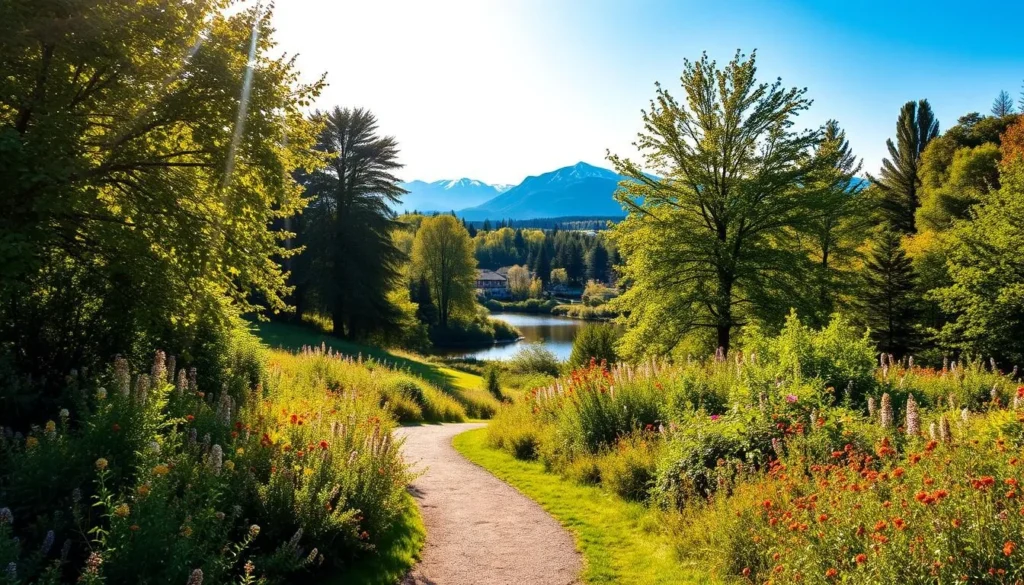
Akerselva River Walk
The Akerselva River offers a tranquil way to experience Oslo’s cityscape. You can take a leisurely walk along the river, which flows through the heart of the city. Starting from Maridalsvannet Lake, the 8-kilometer path takes you through a mix of industrial heritage and natural beauty, featuring old factories turned into creative spaces and cafes.
| Location | Features | Time to Explore |
|---|---|---|
| Frogner Park | Vigeland Sculpture Park, iconic sculptures | 2-3 hours |
| Akerselva River | Industrial heritage, natural beauty, cafes | 2-3 hours |
Day Trips from Oslo
With its strategic location, Oslo serves as the perfect hub for exploring the surrounding country. You can take a day trip to experience the best of Norway’s nature and culture.
Hiking Destinations Near Oslo
For outdoor enthusiasts, Oslo offers numerous hiking trails just a short journey away. The Nordmarka forest is a popular destination, providing miles of trails for hikers of all levels.
Charming Coastal Towns
The Oslofjord region is dotted with charming coastal towns that make perfect day trips. Drøbak is known for its picturesque wooden houses and narrow streets, while Son boasts a beautiful harbor and excellent seafood. Fredrikstad’s well-preserved old town is another must-visit, with its historic charm and cultural attractions. These towns are easily accessible by public transportation, and summer is the best time to visit, offering a vibrant experience with opportunities for swimming and kayaking.
Visiting these towns provides a more complete picture of Norwegian life outside the capital city, showcasing the country’s rich cultural heritage and natural beauty.
Best Time to Visit Oslo
Oslo’s weather varies significantly throughout the year, making the timing of your visit important. Understanding the seasonal highlights will help you plan your trip.
Seasonal Highlights
Oslo experiences a temperate climate with significant variations between seasons. Summer days are long and mild, with temperatures often reaching highs of 70°F. In contrast, winters are cold, with snow and shorter daylight hours. Spring and autumn offer mild temperatures and fewer tourists, making them ideal for those who prefer less crowded attractions.
What to Pack for Oslo
Regardless of when you visit, it’s essential to pack layers for your trip. Comfortable walking shoes are a must due to Oslo’s hilly terrain. A light rain jacket or umbrella is also recommended, as rain can occur in any season. In summer, don’t forget sunglasses and sunscreen, while in winter, pack proper cold-weather gear, including insulated boots, hats, gloves, and thermal layers. Make sure to bring a reusable water bottle to enjoy Norway’s excellent tap water.
To make the most of your day, consider packing a portable power bank for your phone and ensure your electronics are compatible with European outlets (230V).
Creating Your Perfect Oslo Itinerary
Oslo, the vibrant capital of Norway, is a city that has something for everyone, and with the right itinerary, you can experience it all. Whether you’re interested in history, culture, or outdoor activities, Oslo offers a diverse range of attractions that can be tailored to your interests.
One Day in Oslo
If you only have one day in Oslo, focus on the city’s central attractions. Start your day at the Oslo Opera House, followed by a visit to the Royal Palace. In the afternoon, explore the National Museum to discover Norway’s rich cultural heritage. This trip will give you a taste of Oslo’s history and culture.
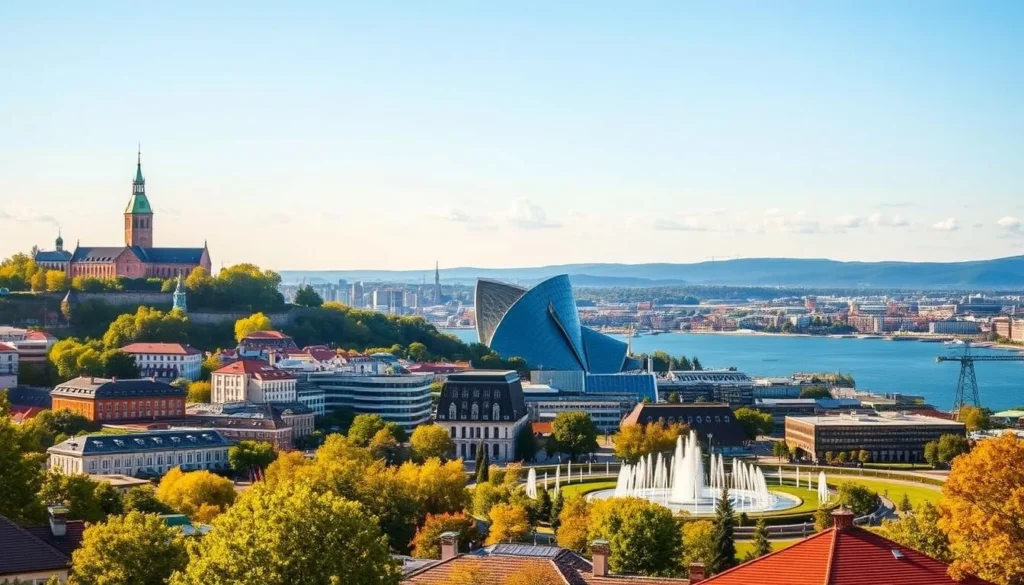
Two to Three Days in Oslo
With two to three days in Oslo, you can explore the city in more depth. On your first day, visit central Oslo’s key attractions. On the second day, explore specific neighborhoods like Grünerløkka, known for its hipster vibe, and experience a unique activity like a floating sauna. If you have a third day, consider a fjord cruise or a day trip to a nearby hiking destination. Spreading your museum visits over multiple days can help avoid cultural overload, allowing you to enjoy each time you visit a museum.
| Day | Morning | Afternoon |
|---|---|---|
| Day 1 | Oslo Opera House | National Museum |
| Day 2 | Grünerløkka Neighborhood | Floating Sauna Experience |
| Day 3 (Optional) | Fjord Cruise | Island Hopping or Hiking Trip |
By planning your trip to Oslo with this itinerary, you’ll be able to make the most of your time and enjoy a mix of popular attractions and unique experiences that showcase the best of what Oslo has to offer.
Conclusion: Why Oslo Deserves Your Visit
After discovering the wonders of Oslo, it’s clear that this city is a hidden treasure worth exploring. Oslo perfectly balances urban sophistication with easy access to nature, making it an ideal destination for various types of travelers. Unlike the fjord regions, Oslo offers a distinct Norwegian experience that’s equally valuable.
Spending 2-3 days in Oslo provides crucial cultural context that enhances the rest of your Norway trip. The city has evolved into a design and architectural hotspot, featuring world-class museums and innovative public spaces. Oslo’s commitment to sustainability and pedestrian-friendly planning makes it pleasant to explore.
Oslo serves as both an excellent introduction to Norway and a fitting conclusion to a longer journey. Rather than just being a transit point, Oslo is a destination worthy of dedicated time. With its unique blend of history, culture, and natural beauty, Oslo is a special European city that deserves your visit. Whether you’re looking for adventure or cultural experiences, Oslo has something to offer, making it a great starting point or finale for your Norway trip in this beautiful country.
—
The above is subject to change.
Check back often to TRAVEL.COM for the latest travel tips and deals.
